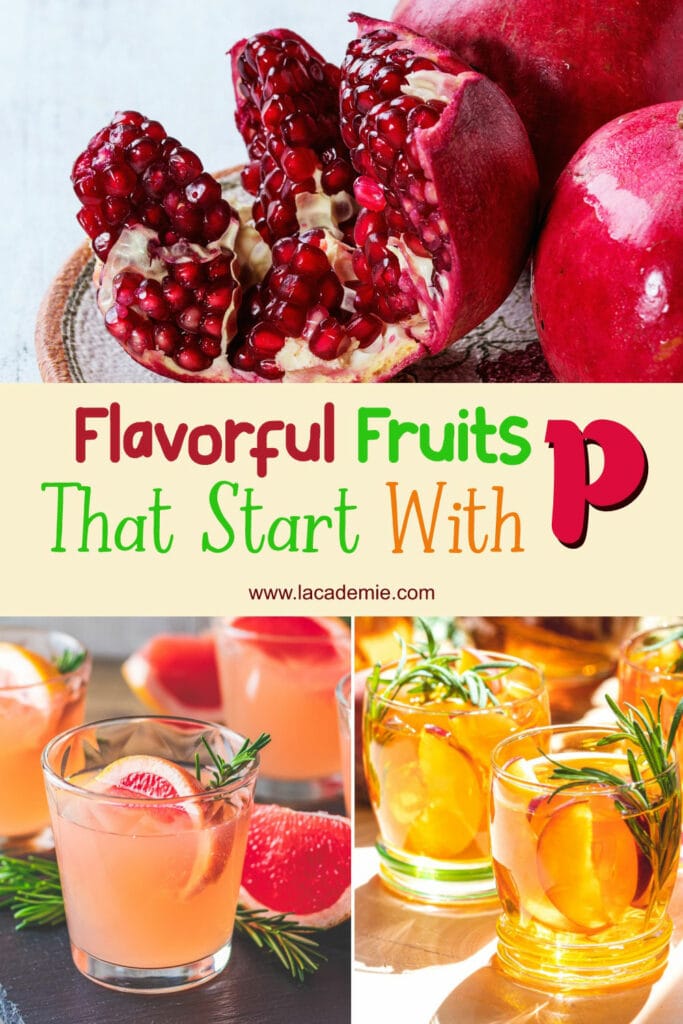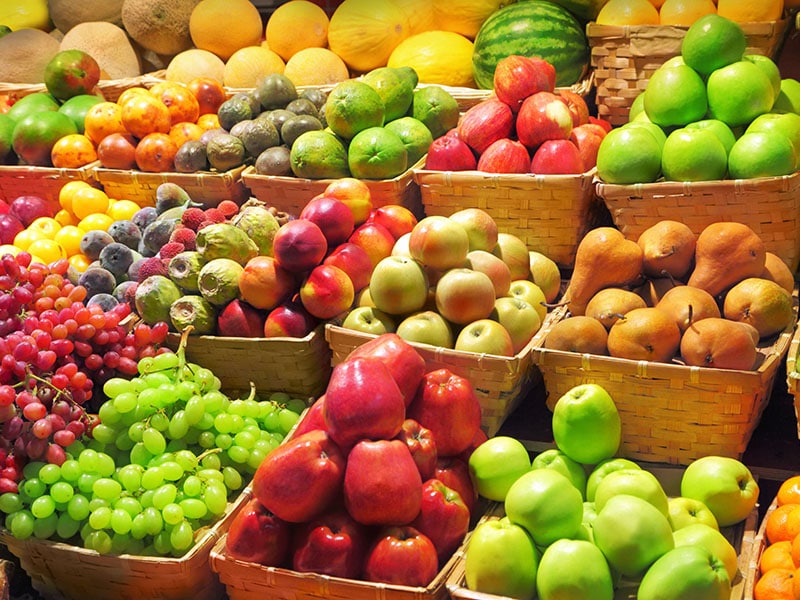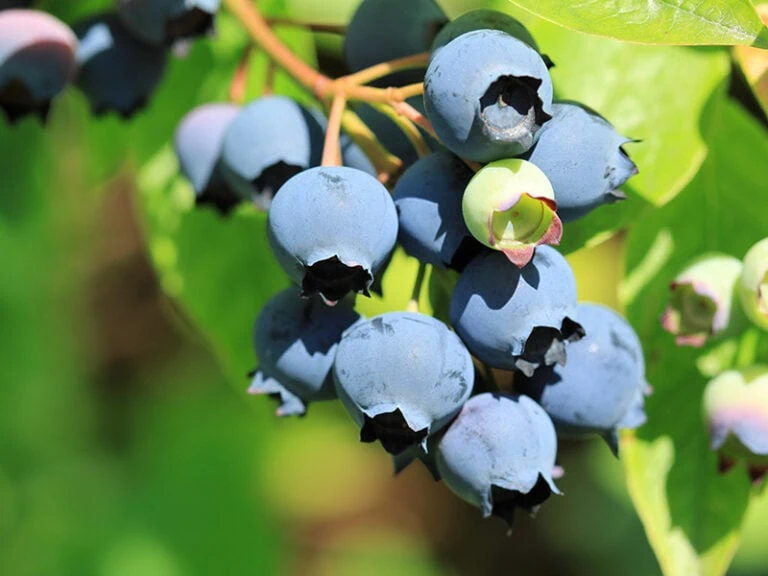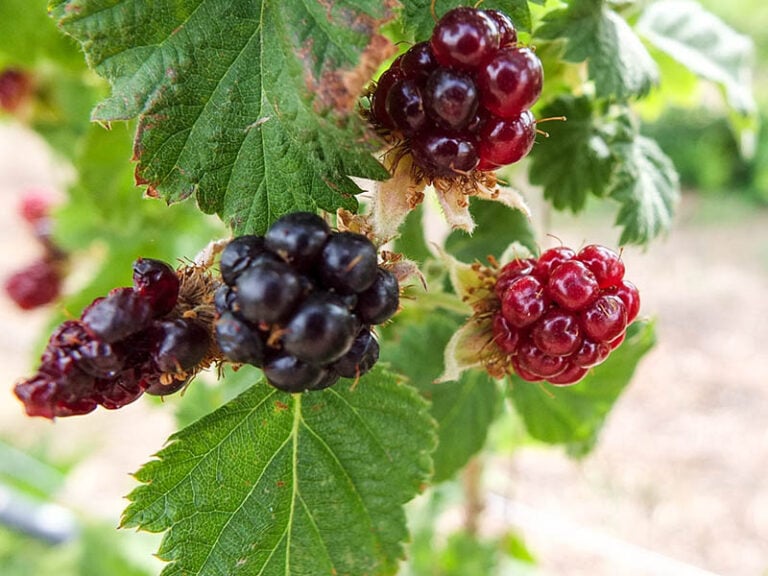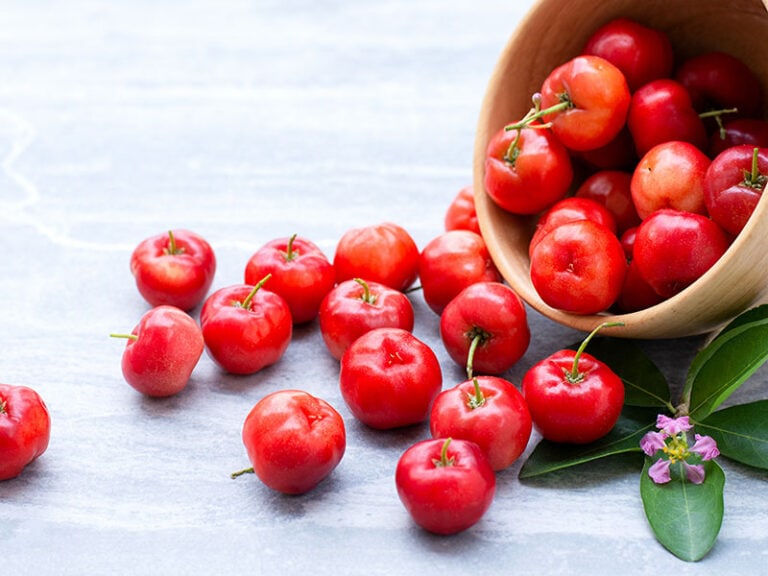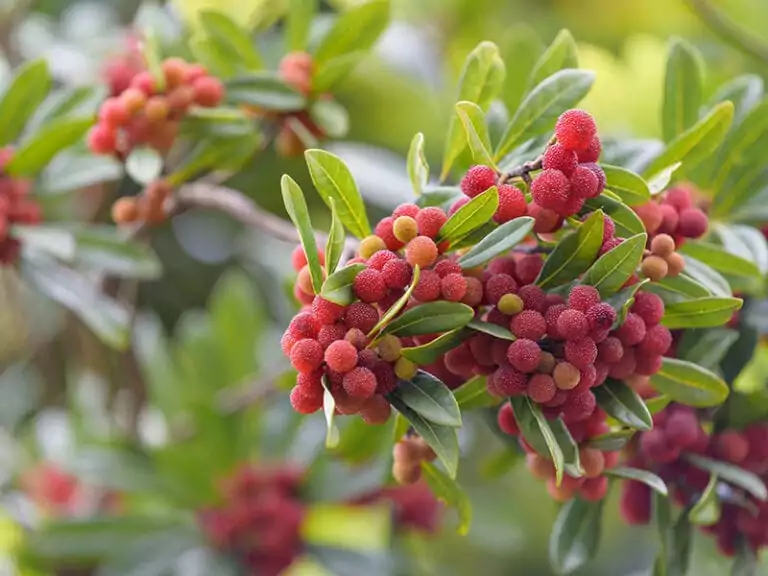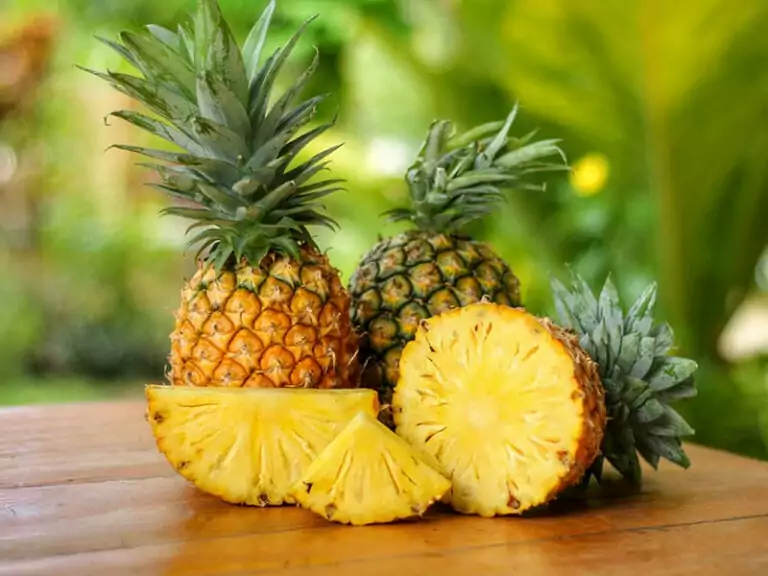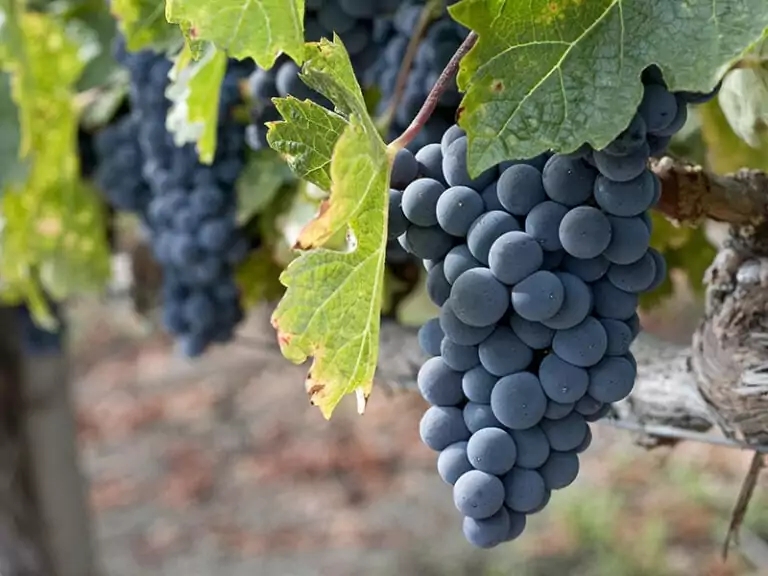How many fruits starting with P can you state? 10? 20? That’s an impressive number. But I bet there are still several foods with P as their starter that you don’t even know yet. And here, in this list, you will find all the knowledge that you may still lack.
Apart from their name, I also provide to you these fruits’ origination and usage. Believe me, with proper cooking methods, all the fruits below will turn into delicious desserts or snacks. So, let’s find out my fruits list!
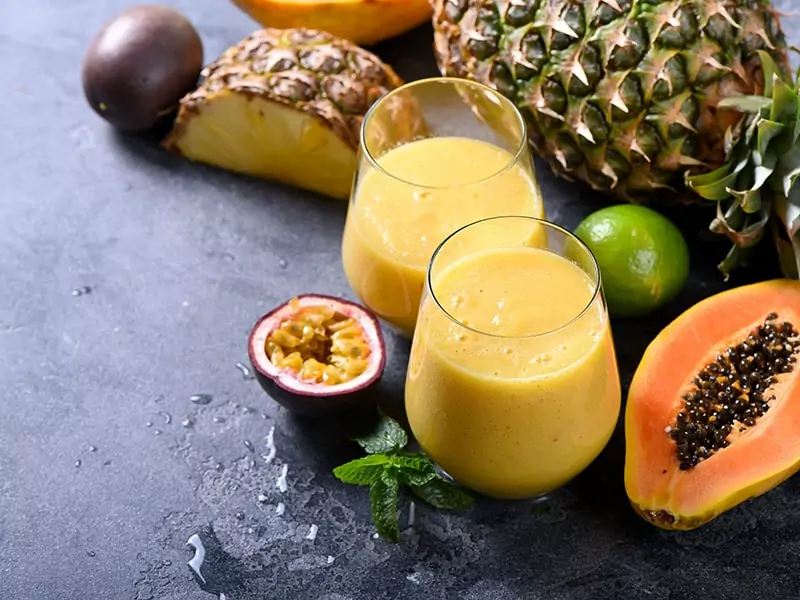
26 Fruits That Start With Letter P
In this article, I will present to you all 26 fruits that start with P. Various fruits on this list have different originations. Some of them come from America, some are native to the Europea, while others originate from Asia.
- Papaya
- Pineapple
- Passion Fruit
- Pink Pearl Apple
- Paw Paw
- Pitaya
- Pineberry
- Pumpkin
- Pequi
- Peumo
- Physalis
- Peach
- Pear
- Persimmon
- Pomelo
- Pomegranate
- Plum
- Plumcot
- Plantain
- Prune
- Persian Lime
- Ponkan
- Pulasan
- Pigface
- Phalsa
- Petit Rouge Grape
Scroll down for more information in each fruit!
11 American Native Fruits That Start With The Letter P
Since the American continent spreads more than eight thousand miles from North to South, its climate varies significantly, from tropical rainforests to dry climates. This leads to the diversity of fruits there. You will be surprised by some fruits in this list.
Papaya
Originating from Central America, papaya is a well-known tropical fruit besides banana, mango, and oranges. When papaya is ripe, its skin turns orange, and its flesh becomes sweet. Unripe papaya is poisonous, but you can still eat it after cooking papaya.
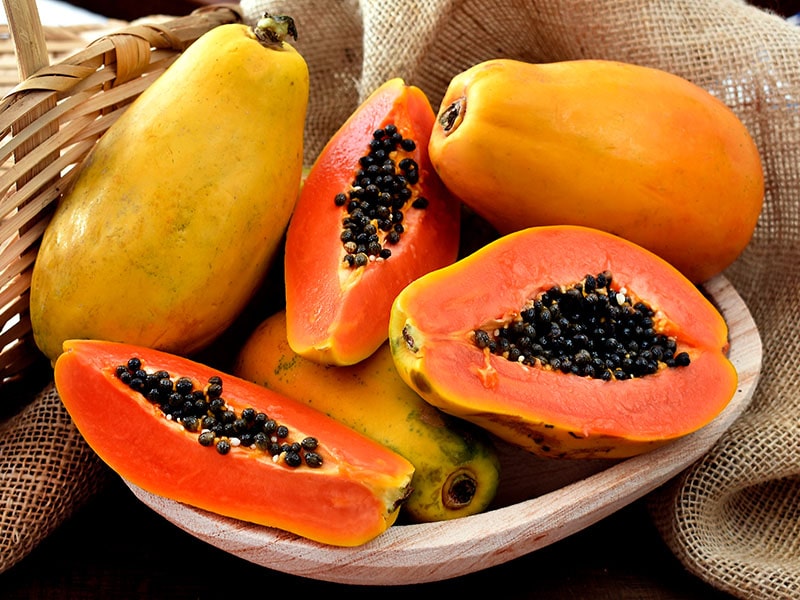
People on diet are recommended to eat many papaya types as it contains less sugar than other fruits. Not only that, papaya is also packed with antioxidants reducing inflammation, vitamins, and other nutrients.
“Can papaya be spoiled?” – is something that many people wonder about. Although this fruit looks tough, you have to store them carefully in order to maintain its quality. The best place to store your delicious ripe papaya is the fridge.
One thing to note, you’ll want to know the most effective ways to cut and enjoy a papaya before buying this fruit. As papaya is a big fruit, peeling it might seem like a chore at first. But trust me; your effort will be worth it.
Check This Video To Make A Delicious Papaya Salad Yourself.
Pineapple
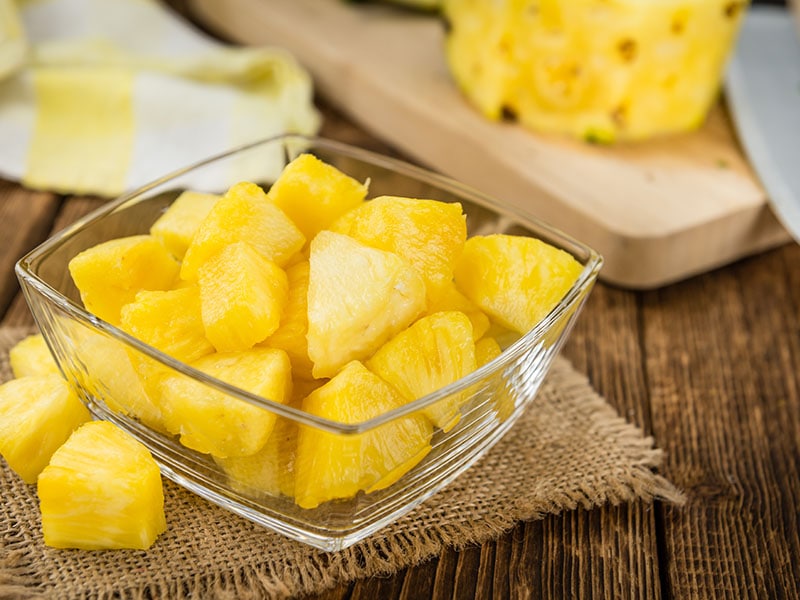
Looking at a pineapple, one may think it’s a large fruit. But that’s wrong. Pineapple is actually made of numerous individual berries growing around a central core. While it’s native to South America, you can find other desirable kinds of pineapple in cooler regions.
With its sweet, tangy flavor, pineapple is a preferable choice to make desserts or salads. Plus, pineapple is also a mainstream ingredient in Hawaiian accompaniments to bring freshness to your tongue in every bite.
You can even turn this fruit into glazes or dressing sauces without knowing how to make your pineapple ripe faster. Another use for pineapple is marinating meat, as it contains tenderizing properties.
Passion Fruit
Coming from Argentina, Brazil, and Paraguay, nowadays passion fruit is everywhere in the world. And in different regions, it has different names. For example, Hawaiians call it lilikoi while people in Jamaica name it mountain sweet cup.
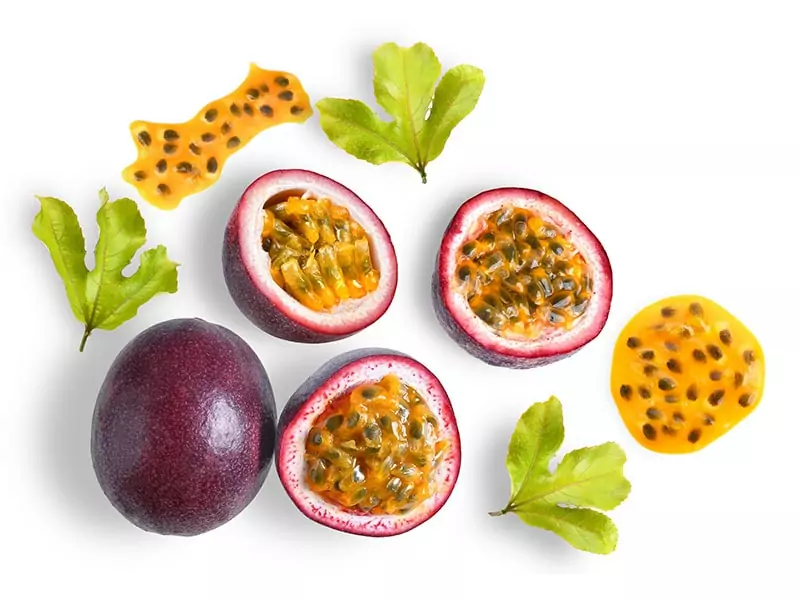
Passion fruit has different rind colors too, from yellow to purple, orange, and so on. And if you wonder about the flavor of passion fruit, they provide sweet juice and edible seeds under the rind. You can find passion fruit in various forms: tea, juice, or even a paste.
One little interesting fact for you: Despite its appearance, passion fruit belongs to the berry family. So next time you eat yellow passion fruit, you can impress everyone with your knowledge by telling them that this fruit whose name begins with “Y” is actually a berry.
You may want to make a passion fruit jam for your cheesecake after watching this video.
Pink Pearl Apple
This must be one of the most beautiful fruits on Earth, even its name is gorgeous as well. Pink Pearl apples get that name for its flesh color. When slicing them in half, you’ll see a bright rosy color inside.
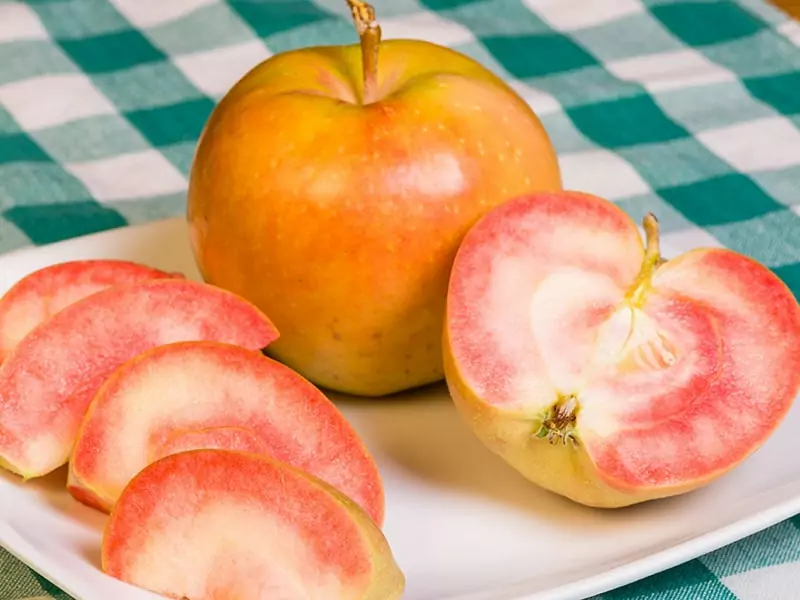
This color is the reason why many people choose Pink Pearl apples to garnish their desserts or salads. Their sweet and tart taste also match perfectly with savory dishes like pork or fish too.
Paw Paw
Though its look isn’t so attractive, the inside is a totally different story. Its flesh is soft like a puree, and tastes sweet, custard-like as banana, mango. Some even say paw paw’s aftertaste is yeasty and floral, same as wheat beer.
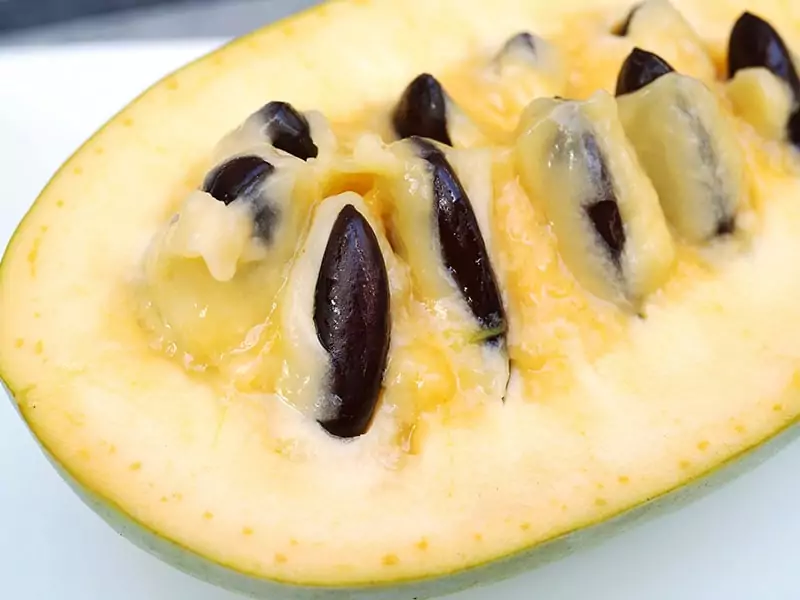
While paw paw can be eaten raw, they are normally used in baking desserts and making ice cream. It’s because ripe paw paw only lasts for a short time, two or three days at the counter and a week if refrigerated.
Pitaya
Did you know that pitaya can also belong to a group of fruits that start with “D” as well? Known for its impressive alternative name – dragon fruit, pitaya possesses a striking look. Its skin is almost pink all the way with additional green leaves looking like thorns.
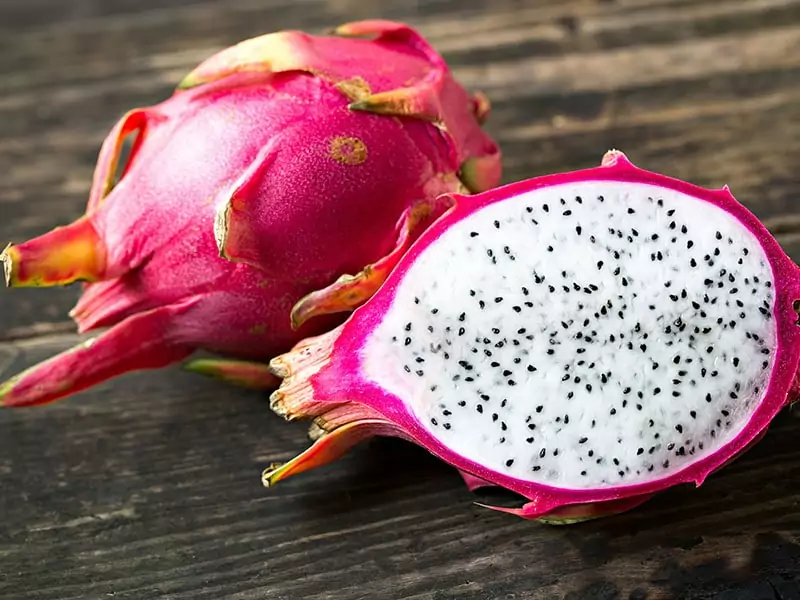
Slicing the pitaya in half will reveal its white flesh with countless seeds inside. Don’t worry about those seeds, they are all edible. Some pitayas have their flesh vivid red, which costs more money. But apart from the color, all pitayas taste sweet with a kiwi-like texture.
Want to make a smooth milkshake with pitaya? Click right here!
Pineberry
As its name indicates, this fruit is a mixture between pineapple and strawberry. For appearance, pineberries look just like strawberries, only smaller with a white color and red seeds.
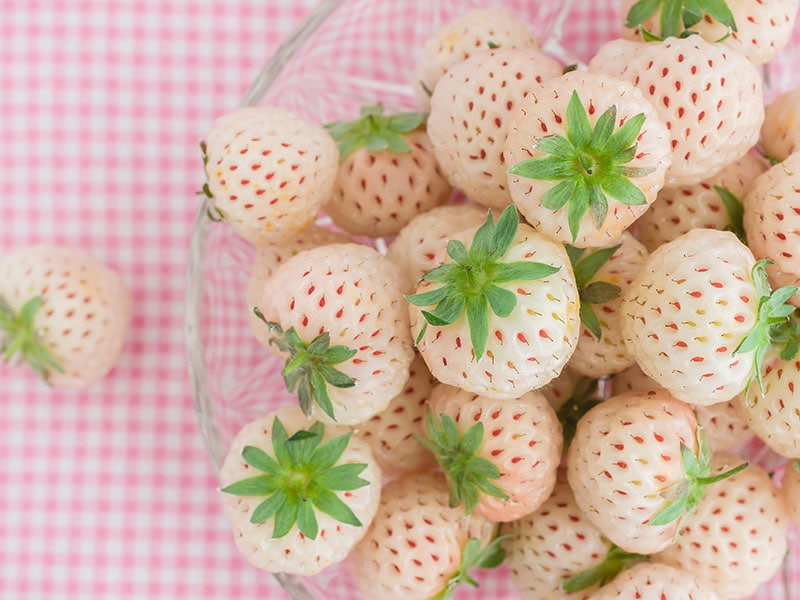
And their flavor is somewhat the same as pineapple, sweet and tart at the same time. You can use them for desserts just like typical strawberries and they taste best when fresh. Soft cheese like burrata or goat cheese is the most suitable combination with these pineberries.
Pumpkin
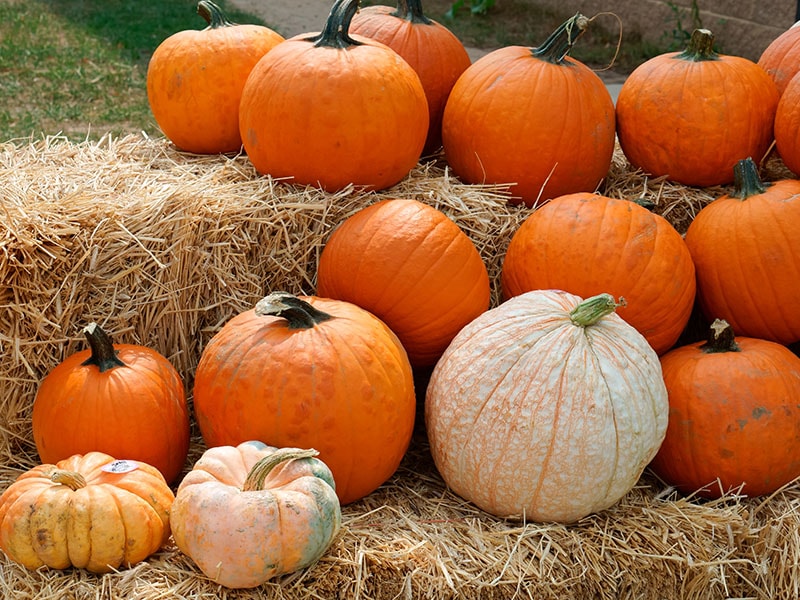
You may be surprised with pumpkin in this list. But yes, pumpkin is a fruit as it has seeds just like other fruits. You can find pumpkins everywhere in your daily lives, but most people will refer to pumpkins with the Halloween image.
Aside from that, pumpkins also appear in numerous recipes, such as pumpkin pie or pumpkin puree. They are also the iconic symbol of fall. That’s why there are many breakfast recipes for the fall that include pumpkin.
Plus, their other parts like seeds, leaves, or flowers are also edible. Even green pumpkins can be used as summer squash or zucchini.
Buy too many pumpkins? I have 4 recipes for you to get rid of them right in this video.
Pequi
Pequi is a common fruit in various Brazilian regions. You can find it sold in street carts or as an ingredient in multiple dishes or drinks. Actually, chicken rice with pequi is a must-try speciality.
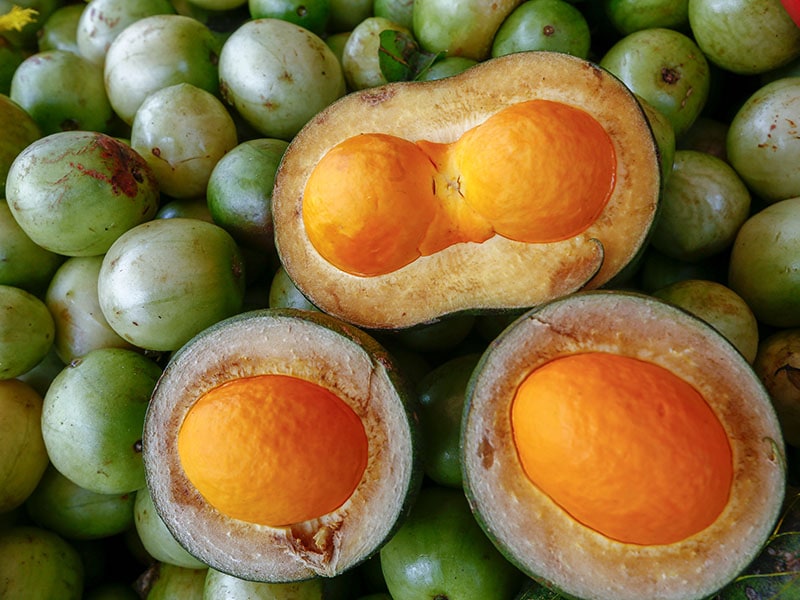
However, when eating it raw, there is one part you must pay close attention to, pequi’s sharp spines. These spines are inside the flesh and surround the pequi’s pit. If not careful, you can have them stuck in your tongue when eating. And let me tell you, once stuck, they are really painful and hard to remove.
Peumo
Peumo is one of those special plants that can grow in both wet and dry conditions. Even being covered in snow for two weeks, peumo trees can still survive. Their wood also has high ornamental value because of its attractive appearance and its moisture-resistant feature.
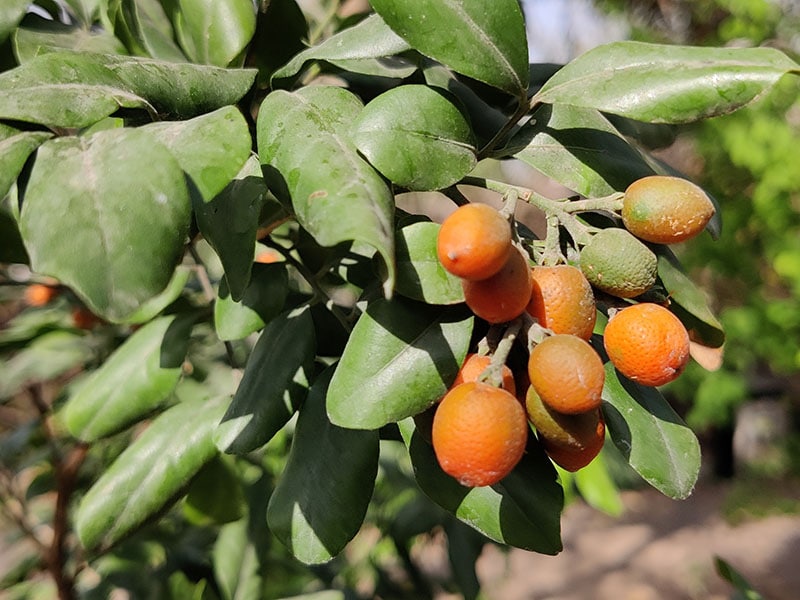
As for the fruits, peumo fruits are edible and will turn vividly red when ripe. However, unlike other fruits that can be eaten raw, peumo fruits need to be washed in warm water before consuming. Or else, it will leave an unpleasant taste.
Physalis
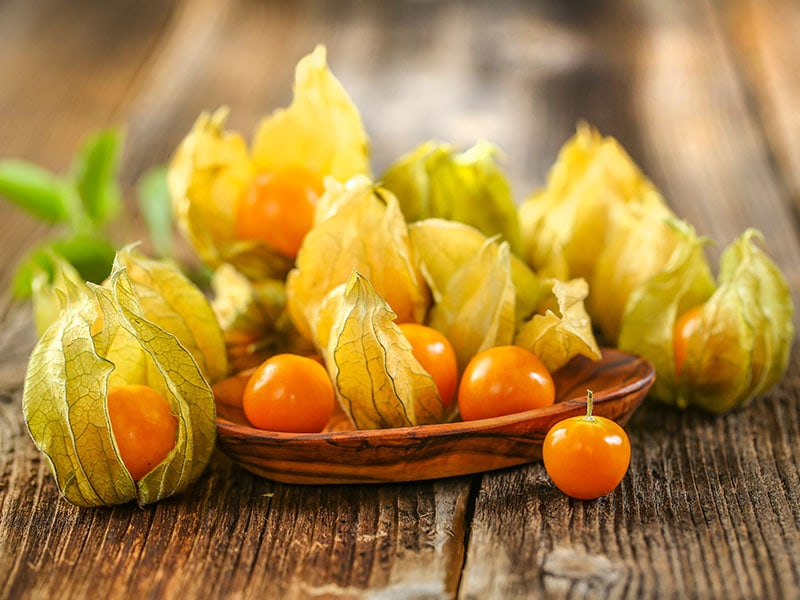
Once you’ve seen Physalis, you can’t forget it. This fruit has a rather strange look, with a thin skin wrapping a tart berry, resembling a Chinese lantern. Thus, it earns the name – Chinese lantern. However, Physalis originally comes from South American countries.
Though not every Physalis is edible, those that can be eaten have a flavor quite similar to strawberries or pineapples. And their texture is the same as firm tomatoes. You can eat them raw or use them in salads, desserts, or fruit preserves.
15 Non-American Fruits That Start With P
However, the Americas is not the only place producing exotic fruits. Let’s explore other fruits starting with P in other continents like Asia, Europe, Africa, etc.
Peach
As American has a whole month dedicated to peaches (in case you don’t know, it’s August), let’s talk about this fruit for a bit. While peaches are one of the most well-liked fruits in America, it originally comes from Northwest China.
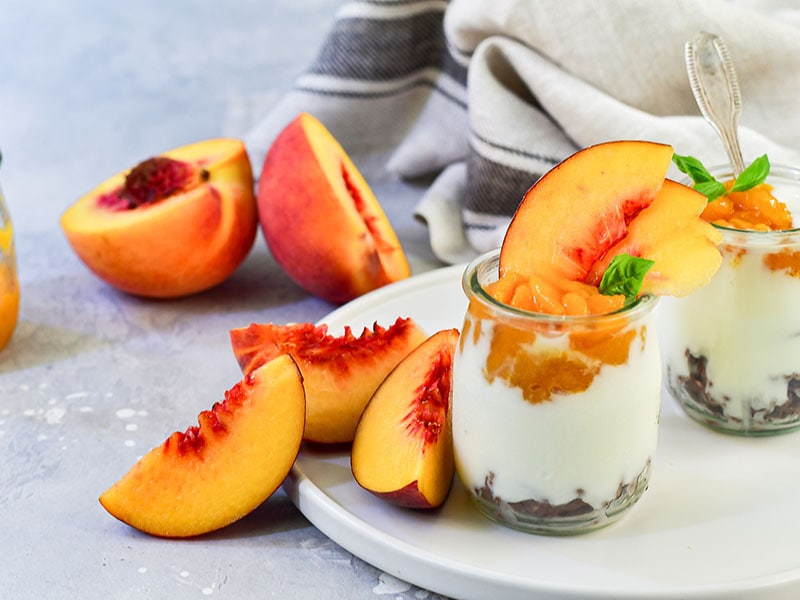
People say the peaches were first cultivated and domesticated in 2000 BC. Today, peaches are still grown in various areas. Their sweet flavor and soft, juicy texture are suitable for numerous treats, especially desserts on the grill. So if you have a BBQ party this weekend, try grilled peach!
This video will guide you on how to make a fresh peach cobbler for a hot summer day.
Pear
Once native to Europe in older times, today there are thousands of kinds of pears in the world. But no matter whether they are common or Asian pears, most pears are sweeter, softer, and juicier than apples, a fruit sharing the same rose family with pear.
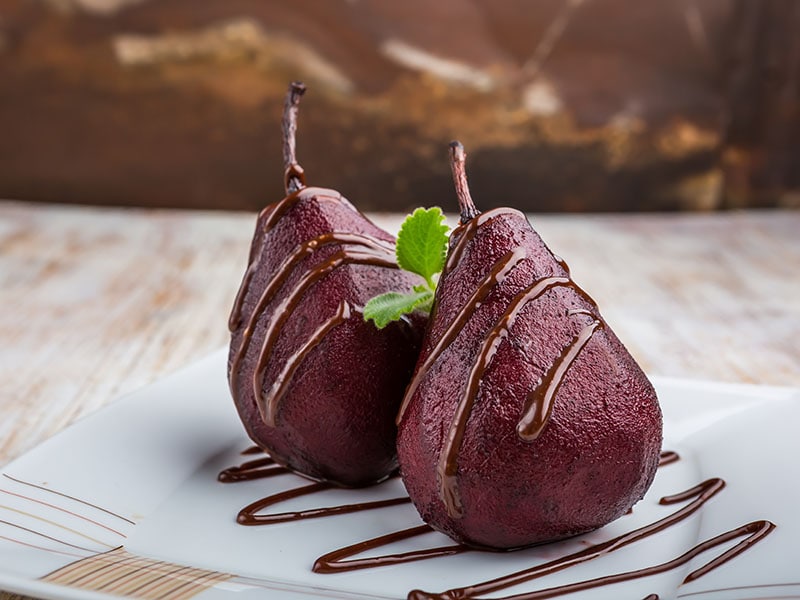
Pears can be found anywhere, even fresh, canned or dried. Pastry cooks use pear juice to make jellies and jams. Pear juice, if left fermented, can become wine called pear cider or perry, just like apple cider.
Persimmon
Most persimmons you see today come from Asia, especially Japan. Many Japanese houses have a persimmon tree in their yard and just let persimmons grow and ripe right on their tree. When ripe, a persimmon looks like a cross-over between a tomato and a pumpkin.
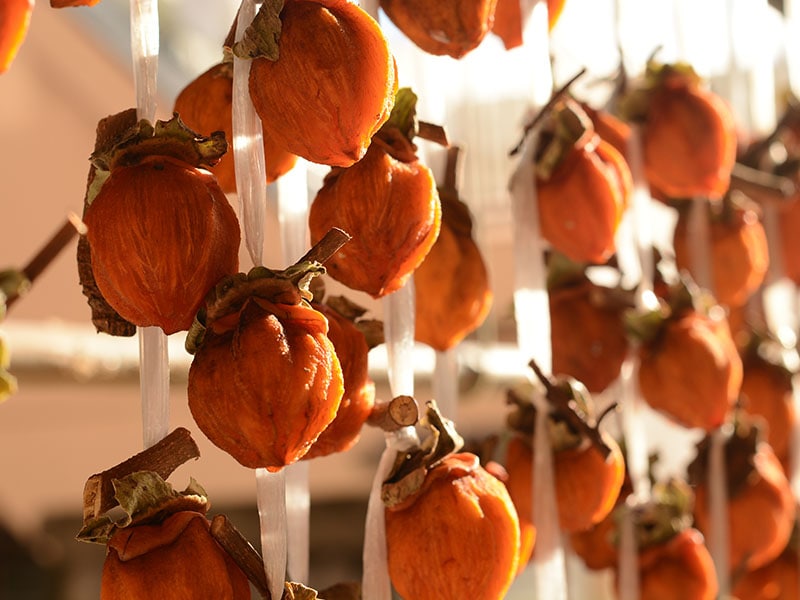
As ripe persimmons are really soft, people often eat it with a spoon. Another popular persimmon product in Asia is dried ones. What’s special about this is Asians dry persimmons by hanging them outside, letting the heat and wind dry them totally.
How about making a persimmon jam for an autumn feeling based on this video?
Pomelo
You may think pomelo, also known as pummelo, is a grapefruit hybrid. However, the truth is completely opposite as pomelo is the grapefruit’s ancestor. If you come to Southeast Asia in summer, you can find this fruit in multiple street carts.
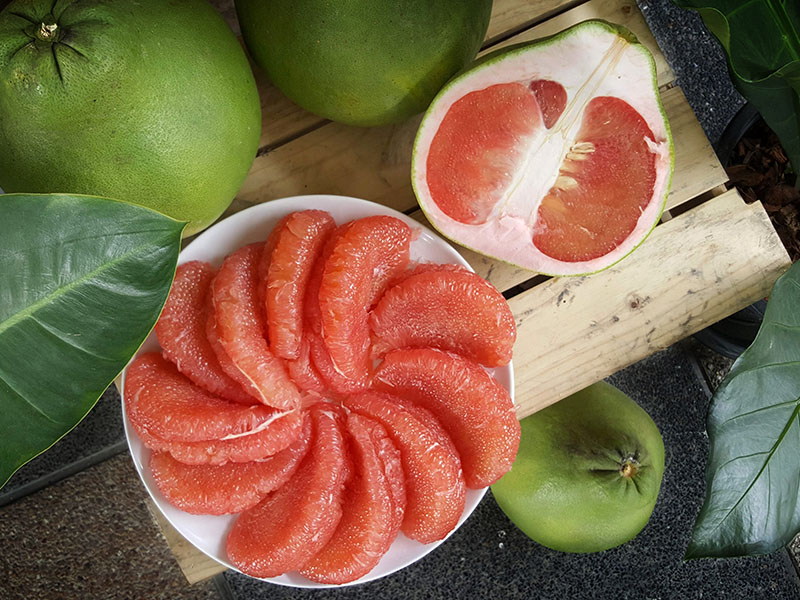
Pomelo is divided into two types: One with white flesh and one with pink flesh. And the latter tends to be sweeter than the former. Asians often eat it as a dessert after a meal with some salt. Pomelo can also be used to make salads or juices.
Pomegranate
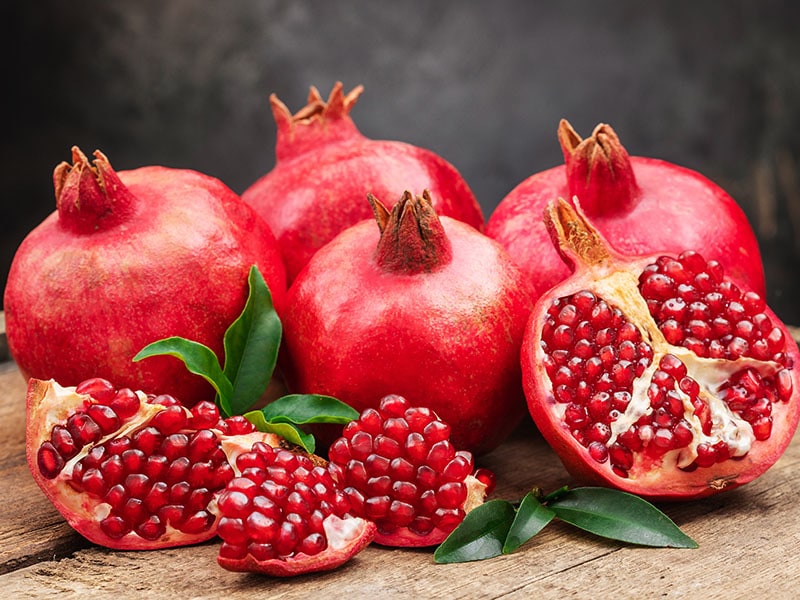
Here is another fruit as beautiful as the Pink Pearl apples above. When pomegranates reach perfect ripeness, innumerable seeds looking like ruby will appear under the red skin. And all those seeds are edible, bringing a tart flavor to your mouth.
Not only is pomegranate delicious, but it also contains various antioxidants, potassium, and vitamin C. And this amazing fruit allows you to create various healthy pomegranate treats, including dishes and drinks.
With that tasty flavor comes a rather high cost. If you wonder why pomegranates are costly, it’s typically because the trees take quite a long to produce fruit and require very specific growing conditions.
Note that eating pomegranates is quite a challenge for those that aren’t used to it as every pomegranate has a seed inside. And taking the inside seeds out is time-consuming. That’s why many prefer enjoying pomegranate as a drink over eating it.
You won’t think these pomegranate seeds are unpleasant anymore after checking this video.
Plum
There are more than 200 different kinds of plum in the world. But the most common plums are Japanese ones and European ones. The former has a longer shelf like and is also larger. You can find them in North American and East Asia’s market.
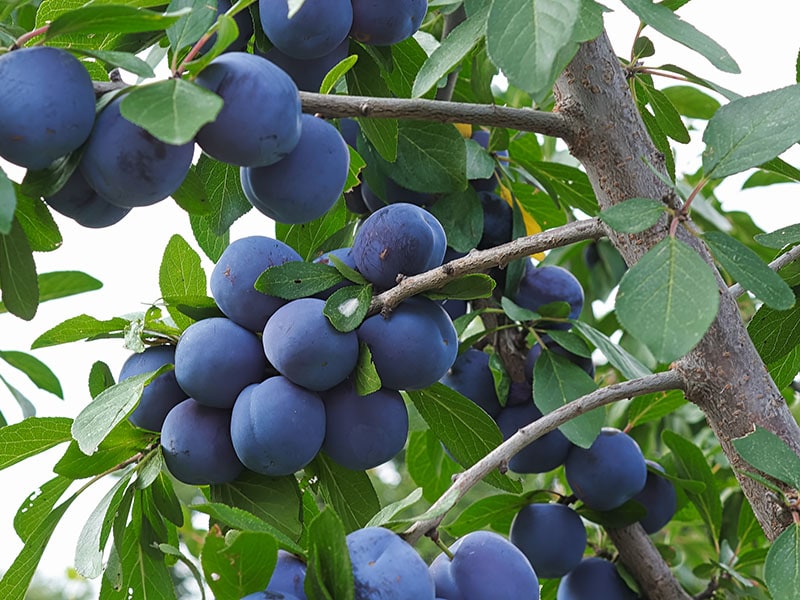
In contrast, European ones have blue-purple skin and are sweeter. No matter what kind they are, plums are usually used in cooking, especially making jam. Some even ferment plum juice into wine.
Plumcot

If you want some fruits less sour than traditional plums, you may want to try these plumcots. As a hybrid between plums and apricots, it has the distinctive flavors of both fruits. And the sweet taste of apricots really lightens the tangy hint of original plums.
Besides replacing plum in desserts, plumcot can also be cooked into sauce and chutney to go with savory dishes like chicken, pork, or fish.
I have 3 recipes of plumcot chutney for you in this video.
Plantain
Don’t mistake plantains for bananas, though they really look alike. In fact, plantains share the same family with bananas. However, their flavors are absolutely different. Green plantains are bland and taste like yuca roots or potatoes.
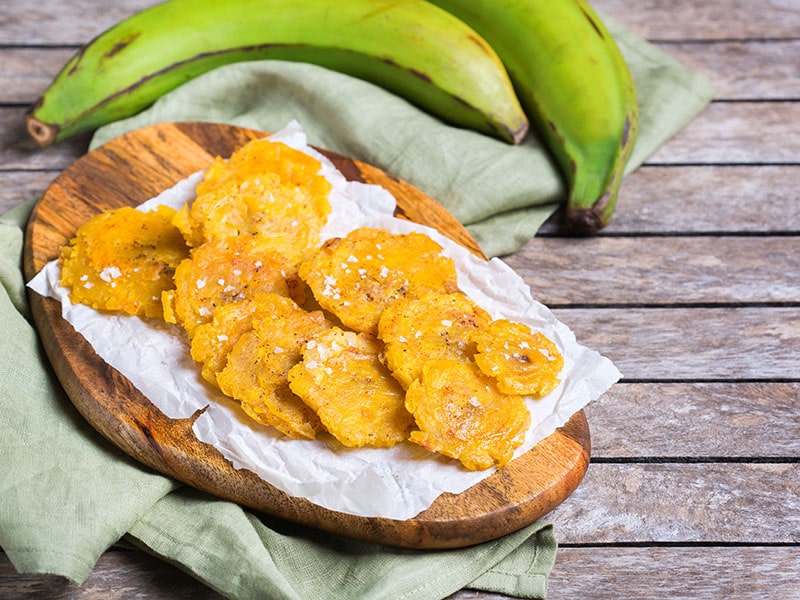
When ripe, they turn sweeter but not as sweet as regular bananas. Moreover, their skin will turn black if completely ripen. Plantains, ripe or unripe, are often fried and served as appetizers or snacks. Also, they are one of many typical Cuban side dishes to balance your meal excellently.
The popularity of this food has extended to numerous nations, and each one has its own variation of plantain cooking with different ingredients.
Prune
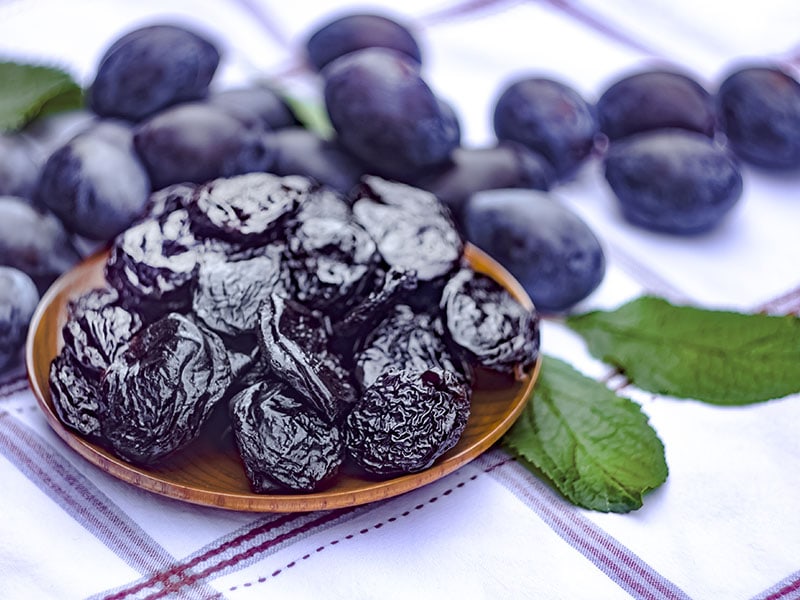
Prune is not a fruit’s name. Europeans tend to call their plums “fresh prunes” while American use “prunes” for the dried plums. Despite their unattractive appearance, prunes are a recommended fruit as they are rich with vitamins and nutrients.
There are multiple ways to eat prunes. You can mix them with nuts and chocolate chips for a midday snack. Chopped prunes are suitable for cereal, smoothies, or salads. They can even act as a flavor addition for savory dishes like soups and stews.
Making juice from prunes is not a bad idea either. Although prunes come from plums, there are still noticeable differences between prune and plum juice. Should you want to try out a new drink, I’d suggest trying out prune juice, it’s quite an experience.
Persian Lime
When referring to “lime”, most people would think of “Persian lime” in their head as it is the most common lime in every grocery store and supermarket. Persian lime looks almost the same as key lime, except for its thicker skin, making the fruit look larger.
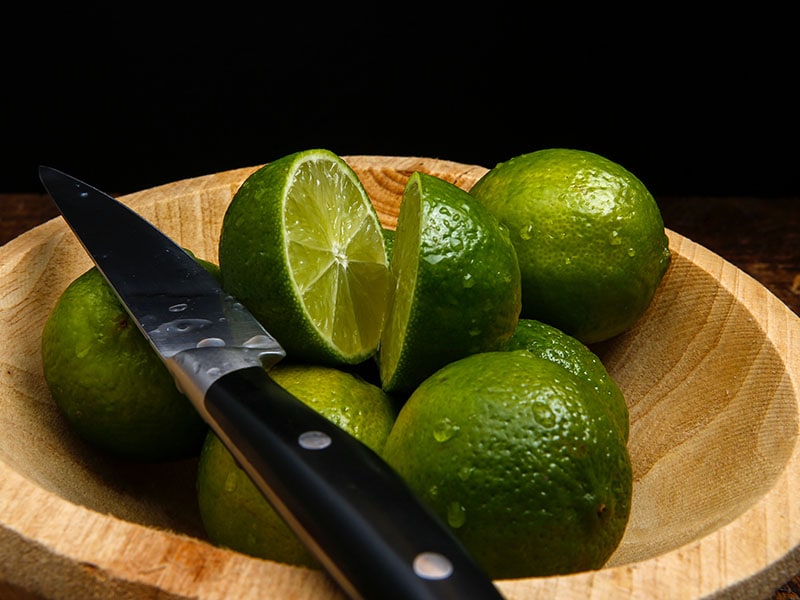
Moreover, in terms of taste, Persian lime is less sour than key lime. It also lacks the unique bitterness of key lime. However, with its longer storage life, Persian lime can easily replace key lime, especially when making vinegar.
This video will show you a detailed description of making a Persian lime pie.
Ponkan
Ponkan is one of the oldest citrus types. Despite being the hybrid between mandarin and pomelos, it’s once mistaken as pure mandarin because of its popularity. The reason for ponkan being favorable may lie in its loose “ring”.
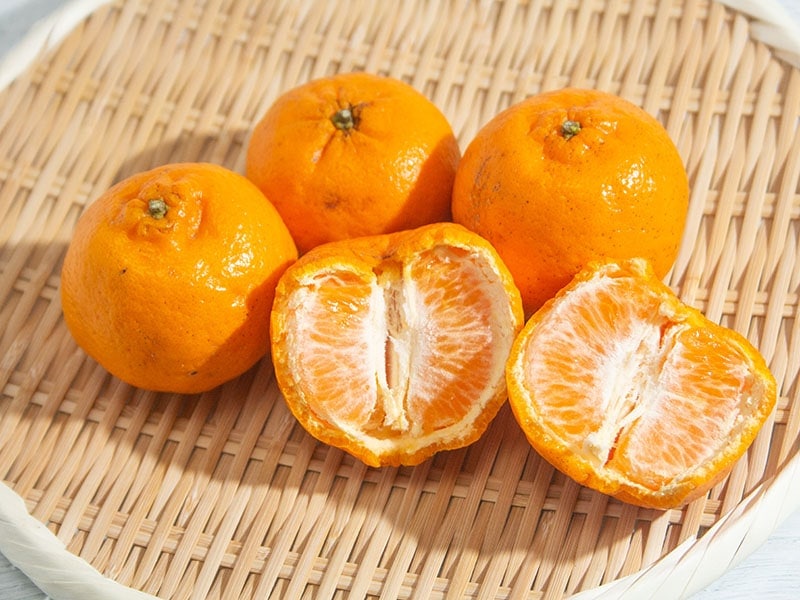
This “ring” makes ponkan much easier to peel, which is a strong point to many people. Also, those with a sweet tooth are also in love with this fruit as it’s the sweetest among all the mandarins.
Pulasan
As a native Malaysian fruit, pulasans often get confused with rambutans because of their close relationship. However, you can differentiate them by looking closely at their appearances. While rambutans have various hairy spines, pulasans don’t.
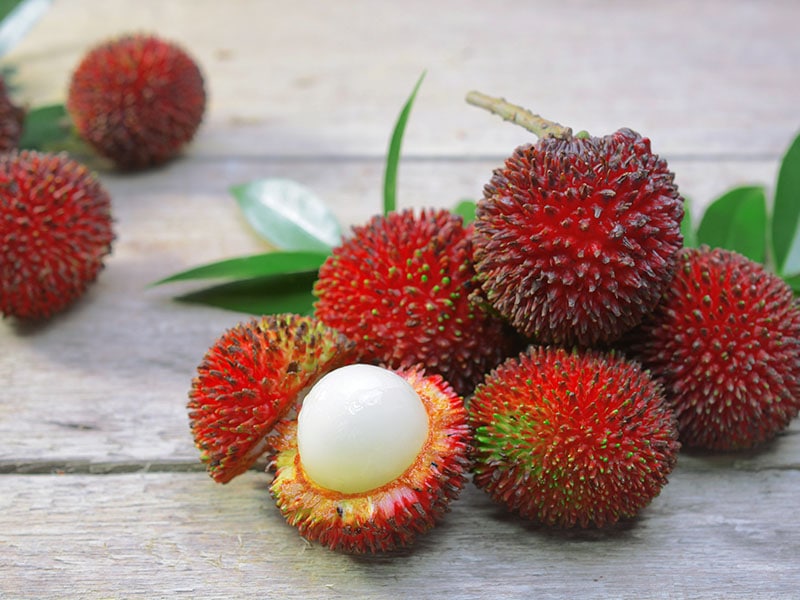
Moreover, many state pulasans are much sweeter than rambutans, and their flesh separates more easily from the seed. Pulasan seeds are also different from rambutan ones as they can be consumed as beverages after roasted.
Pigface
You may not feel familiar with this fruit but pigfaces have been a part of every Australian’s life. It’s no surprise if you find them growing right beside the walking path. Pigface’s flowers are bright pink and when the fruits turn ripe, their skin becomes red and purple, so it’s really easy to spot them.
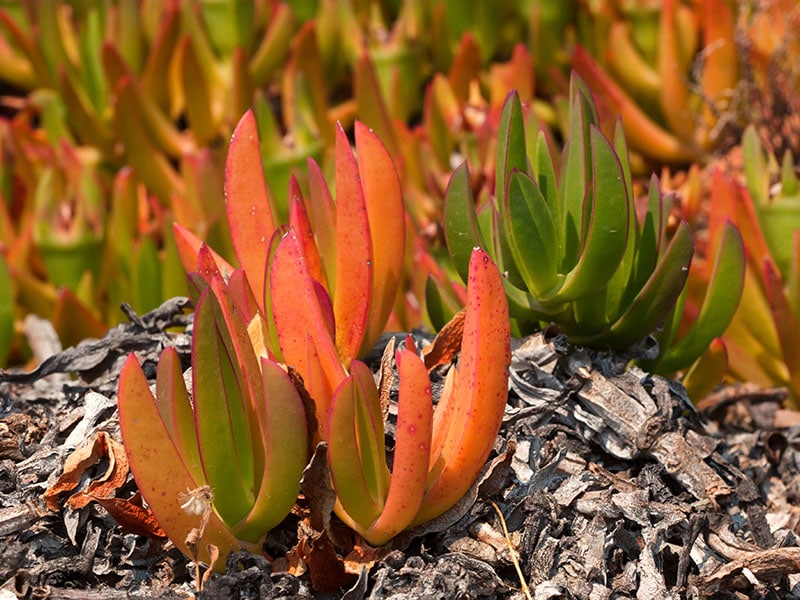
People often eat pigfaces as a snack since they are pretty sweet and salty at the same time, just like eating strawberries or apples with salt. In addition, the juice in their leaves when mixed with water can cure sore throat and mild bacterial infections.
Phalsa
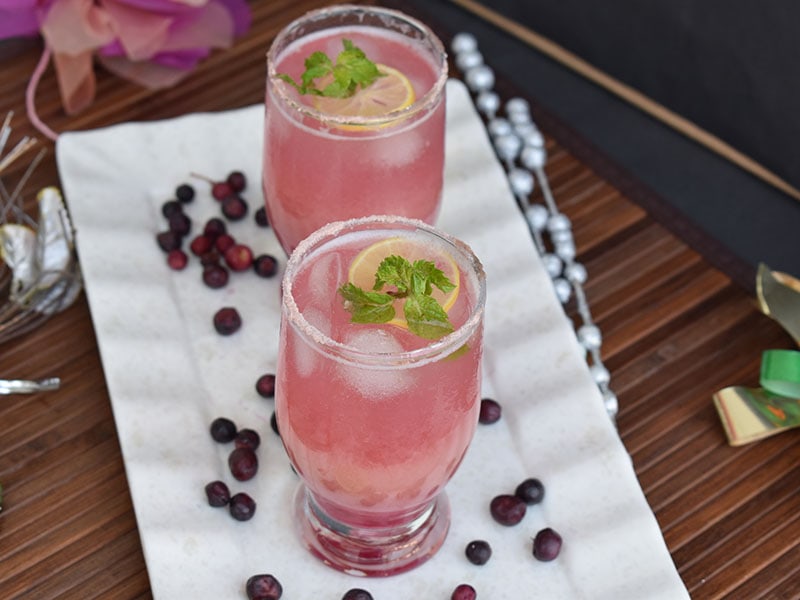
Also called as Indian sherbet berries, phalsa looks like blueberries but with red-purple skin when ripe. And just as its other name suggests, phalsa’s juice is used to make refreshments in summer.
Also, for ripe phalsa’ sweet and sour flavor, you can eat these fruits raw or use them in desserts. Phalsa season usually starts during summer and Indians will harvest them daily.
Petit Rouge Grape
If you are a wine gourmet, you must have heard of Petit Rouge grapes. Growing only in the Valle d’Aosta region of Italy, these grapes are the oldest and most common plants in the area.
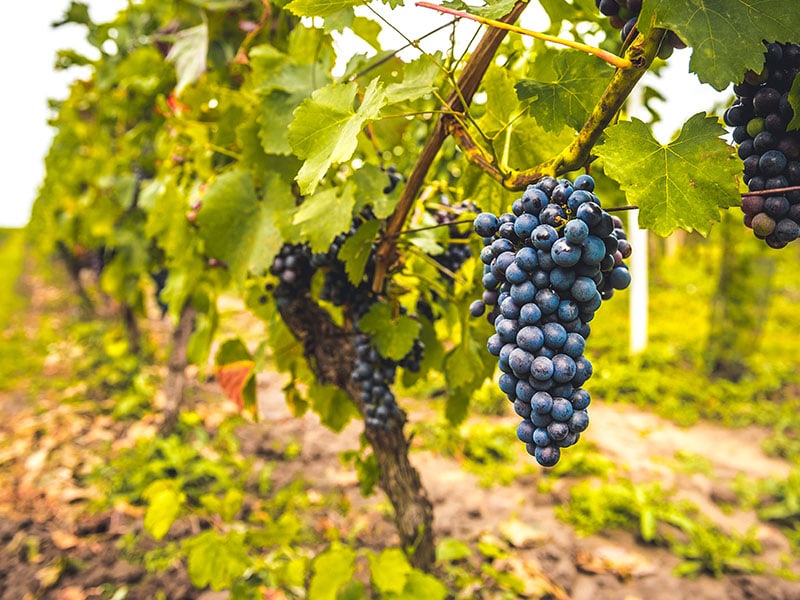
Thanks to their dark color and floral aroma, Petit Rouge grapes are used in multiple wines like Enfer d’Arvier, Torrette, Chambave, Pinot Noir, and many more as they will produce a tart, crisp red color and intense scent to the wine.
What Is Your Favorite Fruit Starting With P?
No matter whether these fruits above originate from American, they all taste delicious and provide multiple benefits to your health. However, I believe this list can not cover all the existing fruits that start with P.
So, do you know any other fruits beginning with P that I haven’t mentioned yet? If yes, please write down your knowledge with me via commenting. And share this article with your friends and family if you think it’s helpful.
